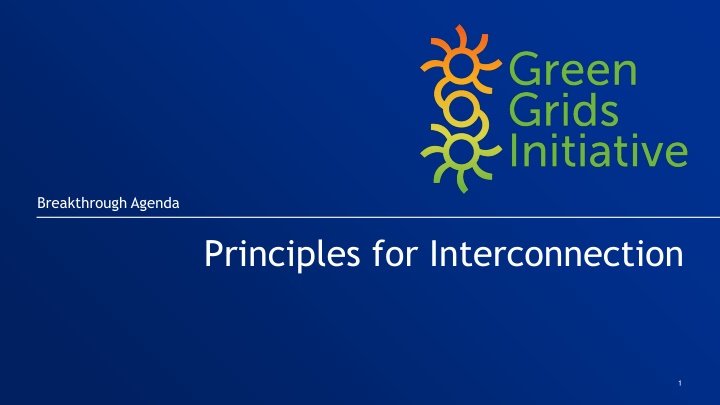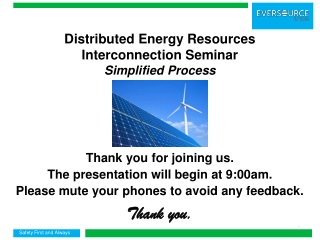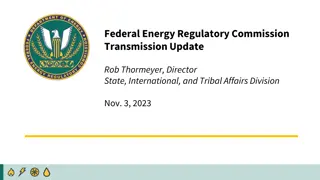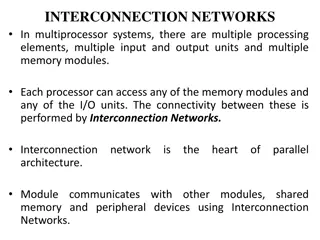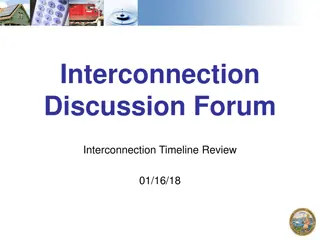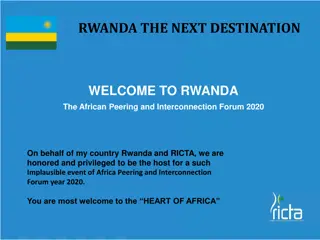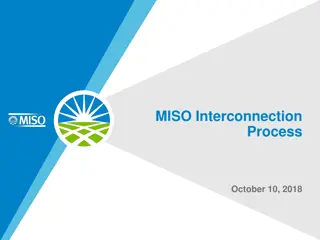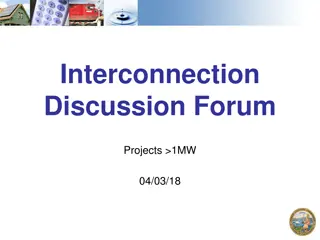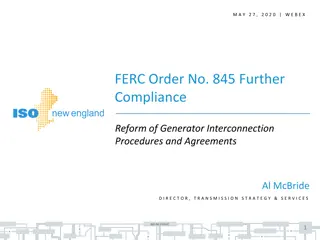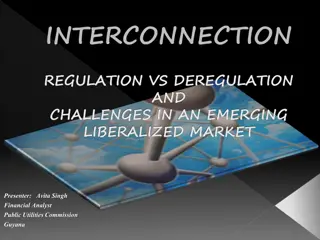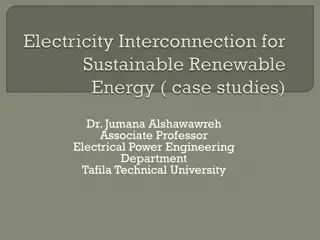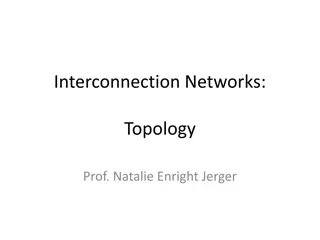Principles for Interconnection in Energy Development
This content highlights the key principles for interconnection in energy development, focusing on cross-border opportunities to scale up renewables, enhance energy security, and promote sustainable development. It covers aspects such as project lifecycle stages, concept development, and operation principles essential for successful interconnector projects.
Download Presentation

Please find below an Image/Link to download the presentation.
The content on the website is provided AS IS for your information and personal use only. It may not be sold, licensed, or shared on other websites without obtaining consent from the author.If you encounter any issues during the download, it is possible that the publisher has removed the file from their server.
You are allowed to download the files provided on this website for personal or commercial use, subject to the condition that they are used lawfully. All files are the property of their respective owners.
The content on the website is provided AS IS for your information and personal use only. It may not be sold, licensed, or shared on other websites without obtaining consent from the author.
E N D
Presentation Transcript
Breakthrough Agenda Principles for Interconnection 1
OFFICIAL Overview a joint project of CEM and MI Cross border interconnection offers major opportunities to scale up renewables, enhance energy security and promote sustainable development. For example, in the Asia-Pacific region, achieving 15% cross-border electricity trade by 2040 could unlock: Value Emissions saved US$493 billion 3.07 billion tonnes CO2e Source: SunCable The Principles for Interconnectors paper provides a starting point guide for policy makers and developers starting multi-country discussions on developing an electricity interconnector project. 2 OFFICIAL
OFFICIAL Life Cycle Stages a joint project of CEM and MI Project Development Concept Operation Decommissioning 4.1 Assessment of prolonging life 4.2 Decommissioning of transmission infrastructure 4.3 Agreed procedure for the decommissioning of all relevant transmission infrastructure at end of life 2.1 Cost-sharing 2.2 Financing modality 2.3 Project financing 2.4 Project implementation / execution / construction 2.5 Project monitoring 2.6 Project Regulation 3.1 Operation protocol 3.2 Agreed operating protocol for the integrated transmission system 3.3 Trading arrangements 3.4 Operation 1.1 Preliminary feasibility studies 1.2 Feasibility studies 1.3 Permitting 1.4 Regulatory approval 1.5 Approval mapping 1.6 Financial planning 1.7 Capital raising strategy 1.8 Preliminary financing 1.9 Peer-to-peer dialogue 3 OFFICIAL
OFFICIAL 1. Concept a joint project of CEM and MI Processes of the concept stage Principles: Preliminary studies should address all social economic welfare factors Initial studies to find out if a project is economically and technically viable Studies should be conducted by credible third parties Establish if both governments have endorsed the project Feasibility studies should include input from all affected parties Undertake consenting and feasibility studies Interconnectors should be considered as part of larger power system plans Engagement with regulators and Transmission System Operators (TSOs) Cost Benefit Analysis should measure social economic welfare of the project 4 OFFICIAL
OFFICIAL 3. Operation a joint project of CEM and MI Principles: A trilateral agreement covering the coordinated operation of the interconnector must be agreed and updated. Develop clear lines of communication for emergencies, planned outages, and shared maintenance. There should be a legal framework agreement underpinning the trade over an interconnector. 5 OFFICIAL
OFFICIAL 2. Project development plan a joint project of CEM and MI Principles: Government A Government B Setting up a trilateral forum between governments, regulators and operators and/or developers is advantageous. It can cover: Regulatory frameworks for managing the costs and revenues associated with the project. Developing a pathway for regulatory arrangements. Apportionment of costs between countries. Agreement of project boundaries with TSOs. Regulator A Regulator B International Transmission System Operator A Transmission System Operator B Development forum Developer 6 OFFICIAL
OFFICIAL Next steps a joint project of CEM and MI Test findings and consult with states in Asia-Pacific bilaterally. To publish the Principles for Interconnectors at Singapore International Energy Week / COP28. 7 OFFICIAL
OFFICIAL Acknowledgements a joint project of CEM and MI Thank-you for listening! With special thanks to our colleagues in the GGI Asia Pacific Working Group Taskforce for their contributions so far: Asia Development Bank ASEAN Centre for Energy Climate Compatible Growth (CCG) Climate Parliament Deloitte E3G Green Climate Fund International Energy Agency (IEA) Integrated Research and Action for Development (IRADe) International Renewable Energy Agency (IRENA) National Grid OFGEM Mekong8 SAARC Energy Centre Sustainable Energy for All Sun Cable Renewable Energy Institute Regulatory Energy Transition Accelerator (RETA) Government of Bhutan UK Foreign Office UK Department for Energy Security and Net Zero UN Economic and Social Commission for Asia and the Pacific UNOPS For more information, please visit: https://www.greengridsinitiative.net/ Email: Rob.Cooke@energysecurity.gov.uk 8 OFFICIAL
